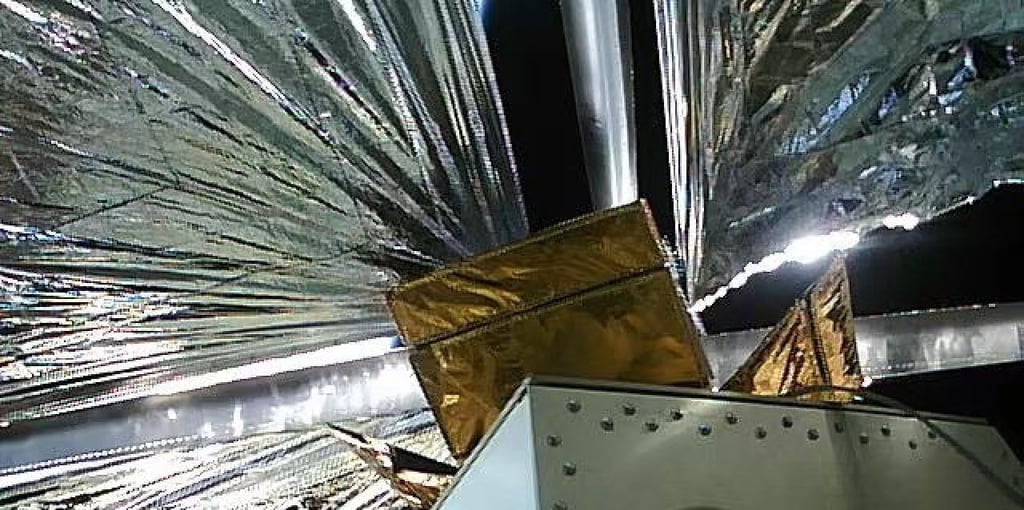Chinese scientists try to reduce space junk by using drag sail on rocket
- It has been unfurled on a recently launched Long March 2 and may help it to re-enter the Earth’s atmosphere within two years
- Over a billion pieces of debris are estimated to be floating around the Earth – two-thirds of them in low-Earth orbits, according to a paper

Chinese scientists have successfully unfurled a drag sail to deorbit one of its recently launched Long March 2 rockets in a bid to reduce space junk – the first time this was done with a rocket.
The drag sail is 25 sq metres (269 sq feet) when fully unfurled and extremely thin – just one-tenth the diameter of a human hair, according to the official Science and Technology Daily.
This kite-like membrane was designed to increase atmospheric drag and accelerate the orbital decay of the 300kg (661 pounds) rocket’s final stage. The rocket was used to send remote sensing satellites into orbit last month and has since become space junk.

Over a billion pieces of junk are estimated to be floating around the Earth – two-thirds of them in low-Earth orbits where most spacecraft operate, according to a paper published in the journal Space Debris in September.
Small satellite constellations such as SpaceX’s Starlink and Amazon’s Kuiper projects have deepened concerns over a looming space debris crisis, the paper said.
China was criticised last year for letting rocket boosters fall back to Earth in an uncontrolled manner.